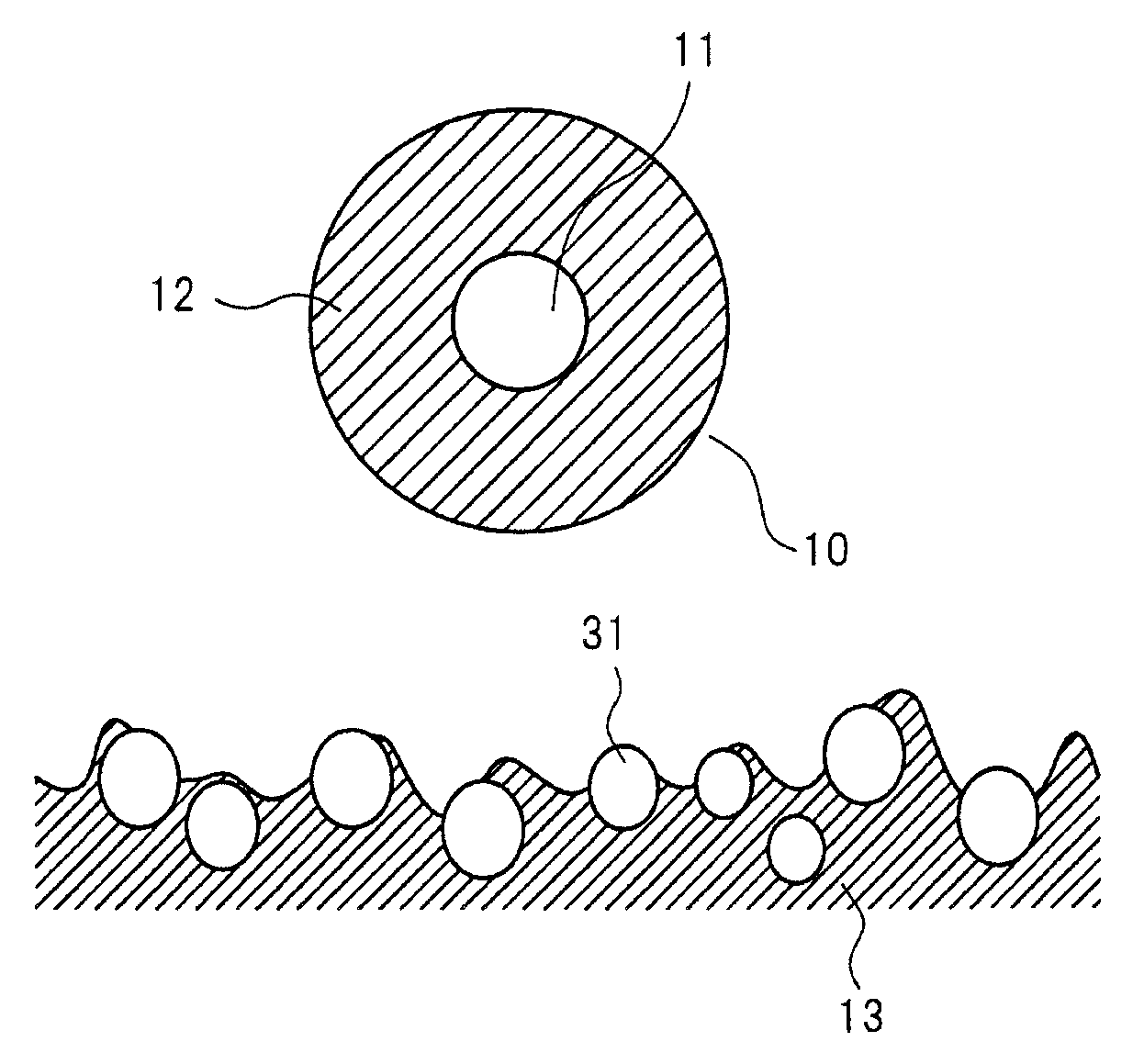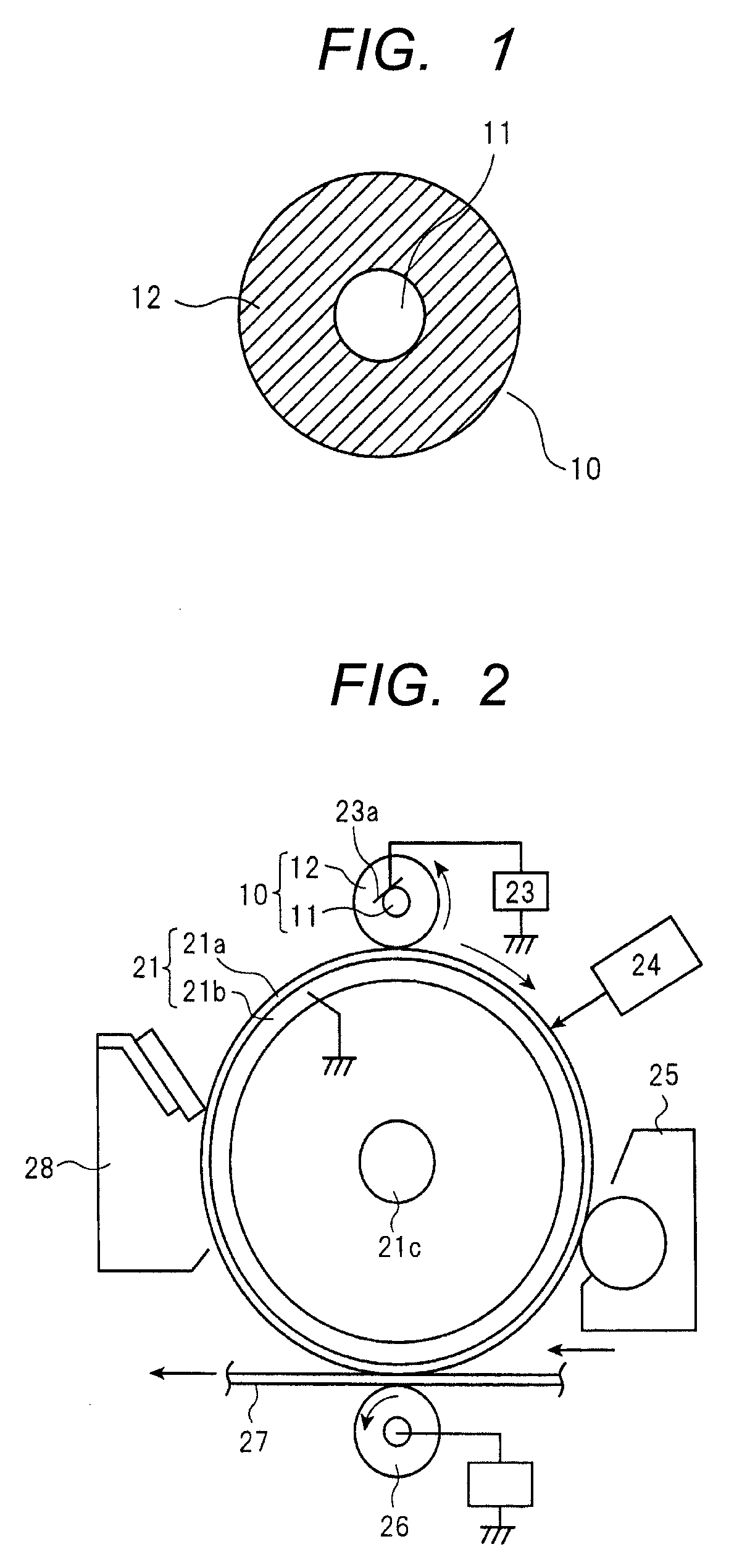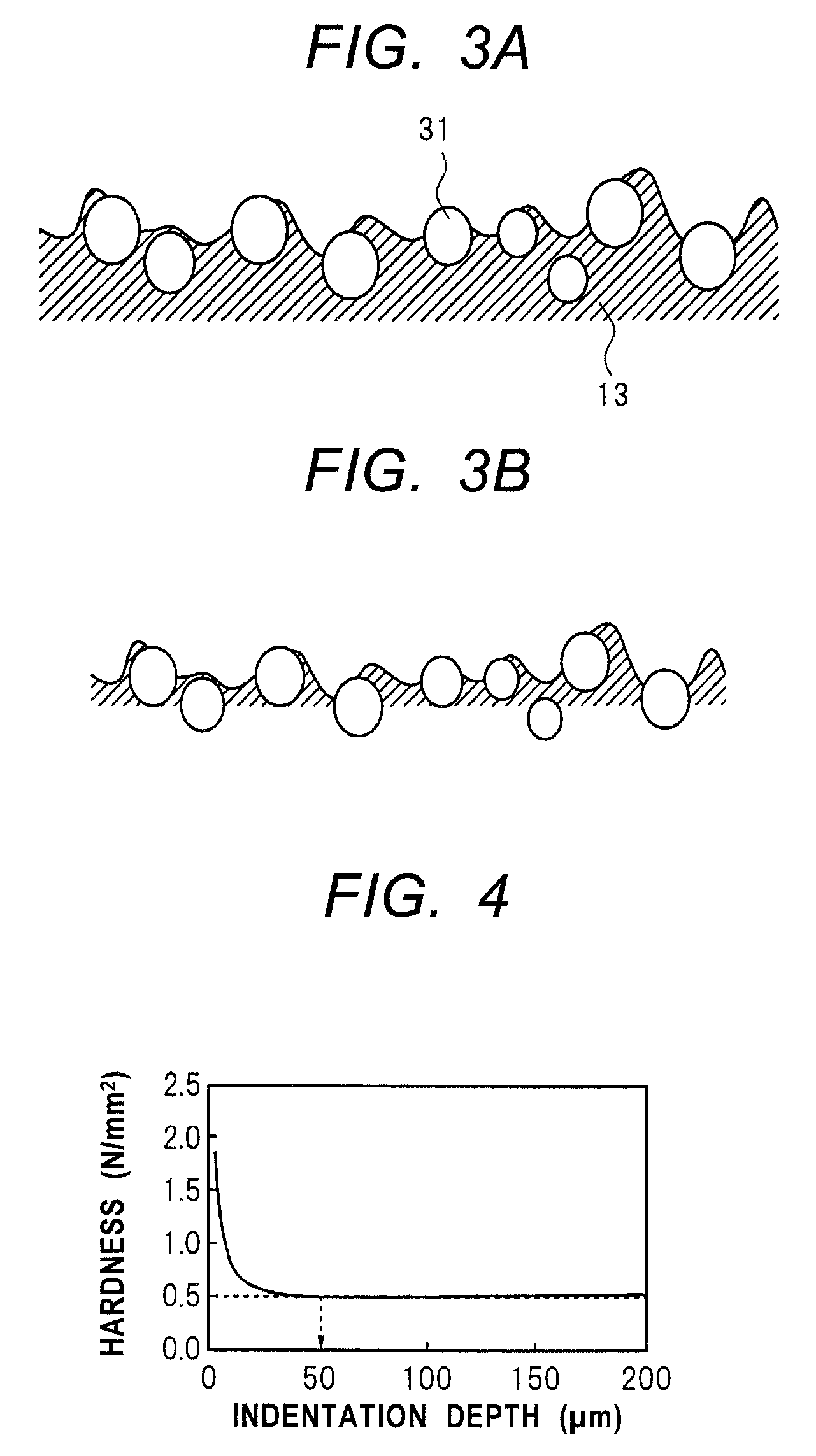Charging member, process for its production, and electrophotographic apparatus
a charging member and electrophotography technology, applied in the direction of metal-working apparatus, electrography/magnetography, textiles and paper, etc., can solve the problem of faulty cleaning of the electrophotographic photosensitive member, and achieve the effect of lowering the grade of electrophotographic images
- Summary
- Abstract
- Description
- Claims
- Application Information
AI Technical Summary
Benefits of technology
Problems solved by technology
Method used
Image
Examples
example 1
Preparation of Unvulcanized Rubber Composition for Elastic Layer
[0092]Materials shown in Table 1 below were mixed by means of a 6-liter pressure kneader (trade name: TD6-15MDX; manufactured by Toshin Co., Ltd.) for 16 minutes in a packing of 70 vol. % and at a number of blade revolutions of 30 rpm to obtain an A-kneaded rubber composition.
[0093]
TABLE 1Part(s)Materialsby massAcrylonitrile-butadiene rubber (NBR)100(trade name: N230SV; available from JSR Corporation)Zinc stearate1Zinc oxide5Calcium carbonate20(trade name: NANOX #30; available from Maruo CalciumCo., Ltd.)Carbon black44(trade name: TOKA BLACK #7400; available from TokaiCarbon Co., Ltd.)Spherical polyethylene particles 1 (spherical PE particles 1)30(trade name: HIZEX MILLION 320MU; available from MitsuiChemicals, Inc.
[0094]Next, materials shown in Table 2 below were mixed by means of an open roll of 12 inches (0.30 m) in roll diameter at a number of front-roll revolutions of 8 rpm and a number of back-roll revolutions of ...
example 2
[0123]A vulcanized rubber roller having been sanded was produced in the same way as Example 1 except that the spherical PE particles 1 used in the A-kneaded rubber composition of Example 1 were changed for spherical PE particles 2 (trade name: HIZEX MILLION 240S; available from Mitsui Chemicals, Inc.) and the spherical PE particles 2 were mixed in an amount of 35 parts by mass. The hardness of its vulcanized rubber layer was measured in the same way as Example 1 to find that it was 78°. Subsequently, the surface of the vulcanized rubber roller having been sanded was subjected to cure treatment by irradiation with electron rays in the same way as Example 1 to produce a charging roller, and the measurement of its cure treatment thickness, the measurement of its surface roughness and the image evaluation were made alike.
example 3
[0124]An unvulcanized rubber composition for elastic layer was prepared and a vulcanized rubber roller having been sanded was produced both in the same way as Example 2 except that the polymer (raw material) used in the A-kneaded rubber composition of Example 2 was changed for 55 parts of NBR and 45 parts of SBR (trade name: TOUGHDEN 2000; available from Asahi Kasei Chemicals Corporation) and the spherical PE particles 2 were mixed in an amount changed to 30 parts by mass. The hardness of the vulcanized rubber layer of the vulcanized rubber roller having been sanded was measured in the same way as Example 2 to find that it was 76°. Subsequently, the surface of the vulcanized rubber roller having been sanded was subjected to cure treatment by irradiation with electron rays in the same way as Example 2 to produce a charging roller, and the measurement of its cure treatment thickness, the measurement of its surface roughness and the image evaluation were made alike.
PUM
| Property | Measurement | Unit |
|---|---|---|
| length-average particle diameter | aaaaa | aaaaa |
| length-average particle diameter | aaaaa | aaaaa |
| thickness | aaaaa | aaaaa |
Abstract
Description
Claims
Application Information
 Login to view more
Login to view more - R&D Engineer
- R&D Manager
- IP Professional
- Industry Leading Data Capabilities
- Powerful AI technology
- Patent DNA Extraction
Browse by: Latest US Patents, China's latest patents, Technical Efficacy Thesaurus, Application Domain, Technology Topic.
© 2024 PatSnap. All rights reserved.Legal|Privacy policy|Modern Slavery Act Transparency Statement|Sitemap



